We acknowledge the Traditional Owners’ deep and enduring connection to the lands and waters of Wilsons Promontory, and their role in caring for Country.
As the new year begins and summer heats up, our thoughts go to holidays and escape. A long time and much-loved get away destination is Wilsons Promontory – the Prom.
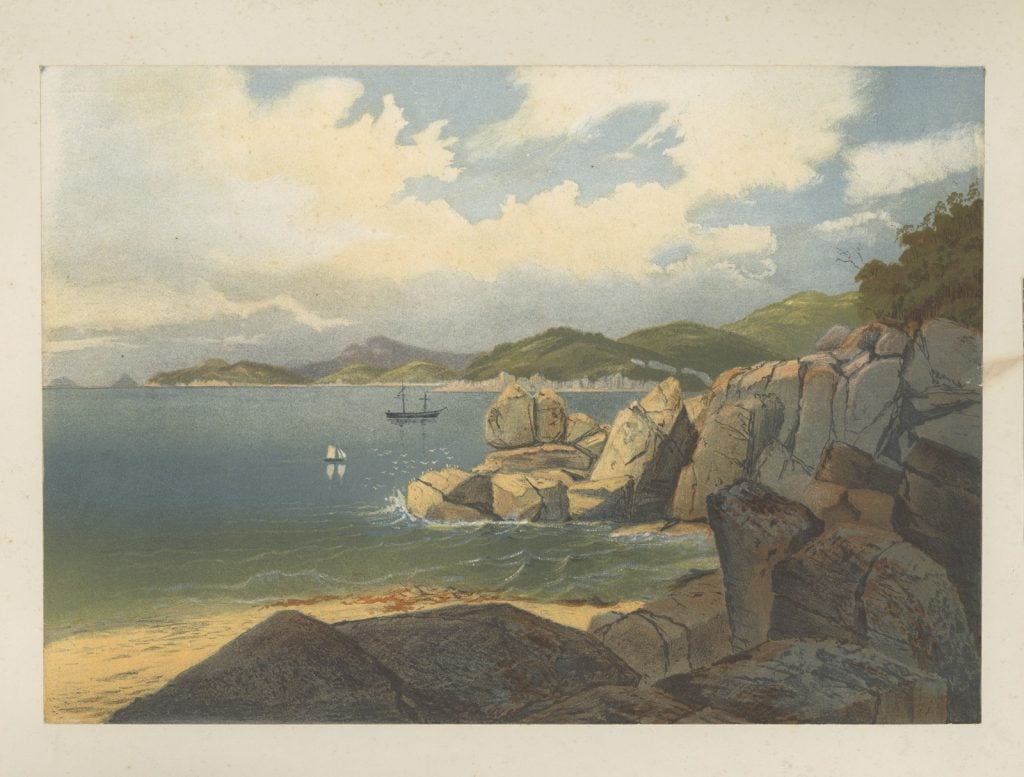
The first Europeans at the Prom, were surveyors, charting the coastline – beginning with George Bass on his 1797-8 voyage and returning later with Matthew Flinders in their circumnavigation of Tasmania. Francis Louis Barrallier‘s map, below, records his 1801 voyage. Sealers, timber cutters, and miners were based there on and off during the 19th century. 1.
The Prom features in many shipping reports as it juts 40 kilometres out into Bass Strait. A lighthouse was built on this southernmost tip of Australia in 1859 – the same year that seven new lighthouses came into service along the perilous Victorian coast.
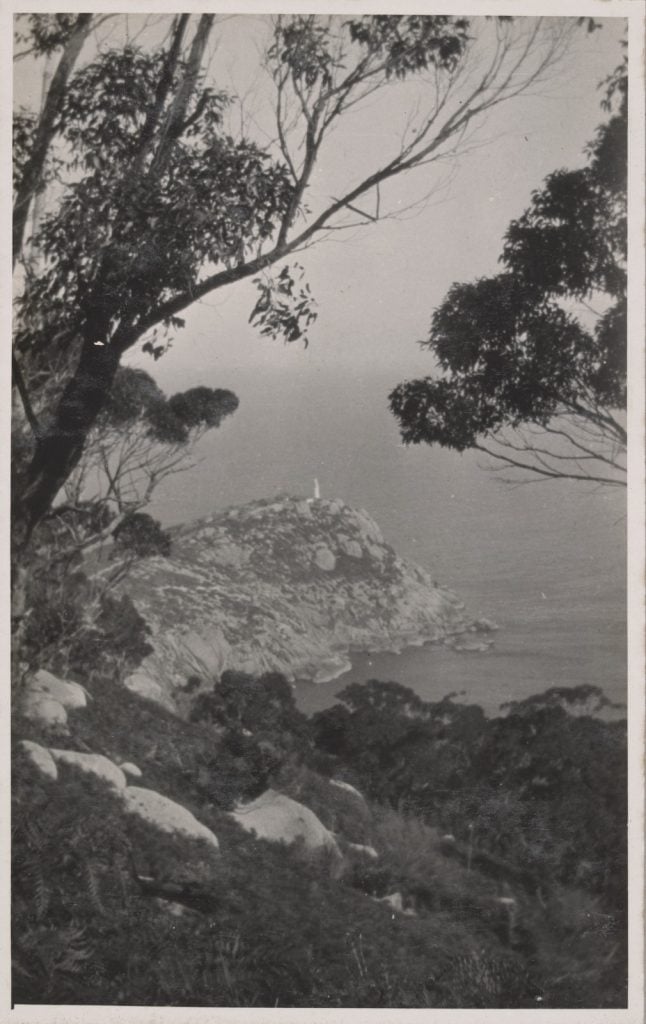
Ferdinand von Mueller, government botanist ventured south into the Prom at the tail end of his Victorian tour in 1853. He added to his specimen collections with further expeditions in 1857 and 1874.
Arthur Lucas, and J.B. Gregory undertook a journey to the Prom lighthouse in 1885 – they were informed on their arrival that they were the first visitors to arrive overland. 2
On their journey home, Gregory wrote:

Gregory went on to write, in dubbing the Prom, the Cornwall of Victoria: ‘We may safely commend the promontory as full of interest to naturalists of all persuasions. Practically inaccessible as it is at present, we believe that a future awaits it as a summer haunt of lovers of nature, lovers of scenery’. 3
Lucas became president of the newly formed Field Naturalists of Victoria, and together with a range of voices – coming from various perspectives – advocated for the formation of a national park at Wilsons Promontory (Argus, 22 February 1888).
Ultimately gazetted on 8 July 1898 as lands temporarily reserved from sale etc.- 91,000 acres ‘more or less’ in the county of Buln Buln was preserved. 4

The land was permanently reserved on 18 August 1908 5 and a committee of management appointed.
The Field Naturalists continued active involvement at the Prom and their early botanical surveys further identified the richness of the flora and fauna and the diversity of habitats that make the park such a jewel.
Extending out into Bass Strait, the Prom is exposed to weather coming from all points of the compass, often at great ferocity. Dealing with these elements can make it a challenging place to explore – but combined with such natural beauty – add to the sense of adventure and being away. As forseen by those early visitors, the Prom did become a favoured destination for walkers and campers. The Victorian Government Tourist Bureau, established in 1908, added the Prom to their itinerary.
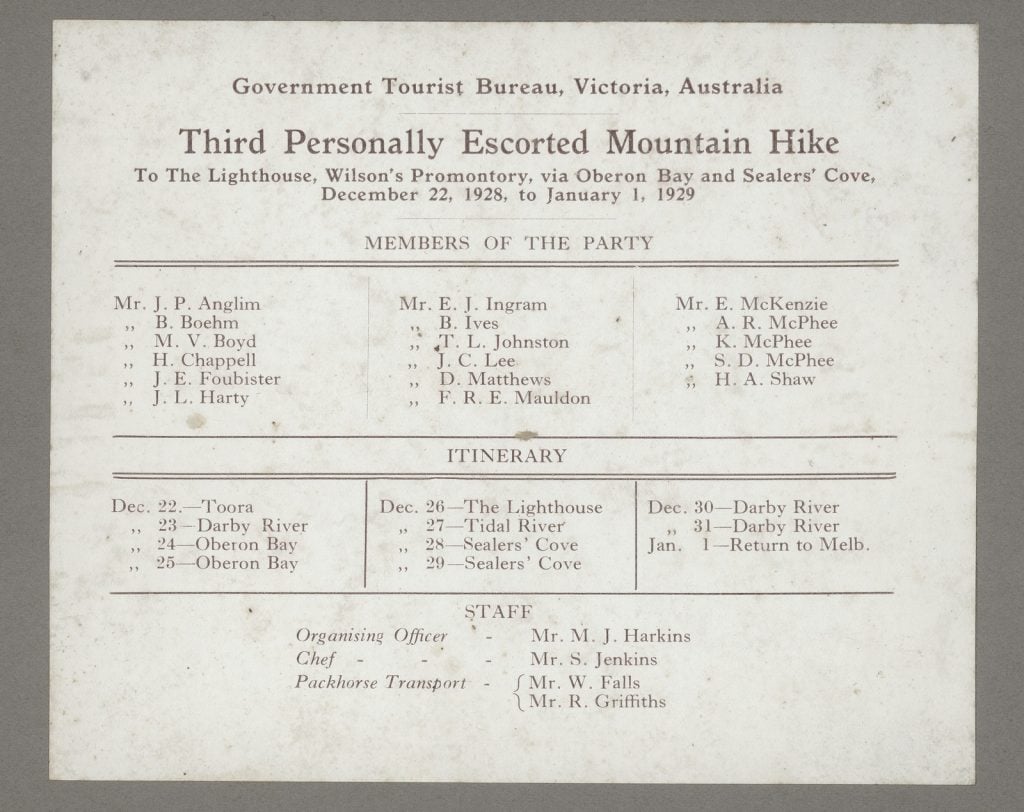
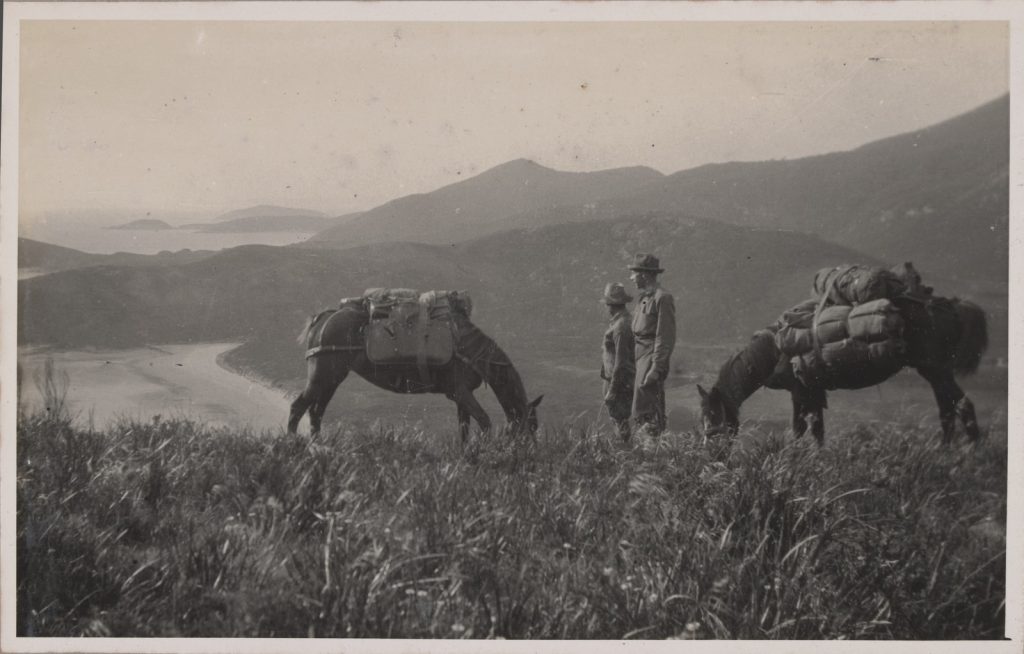
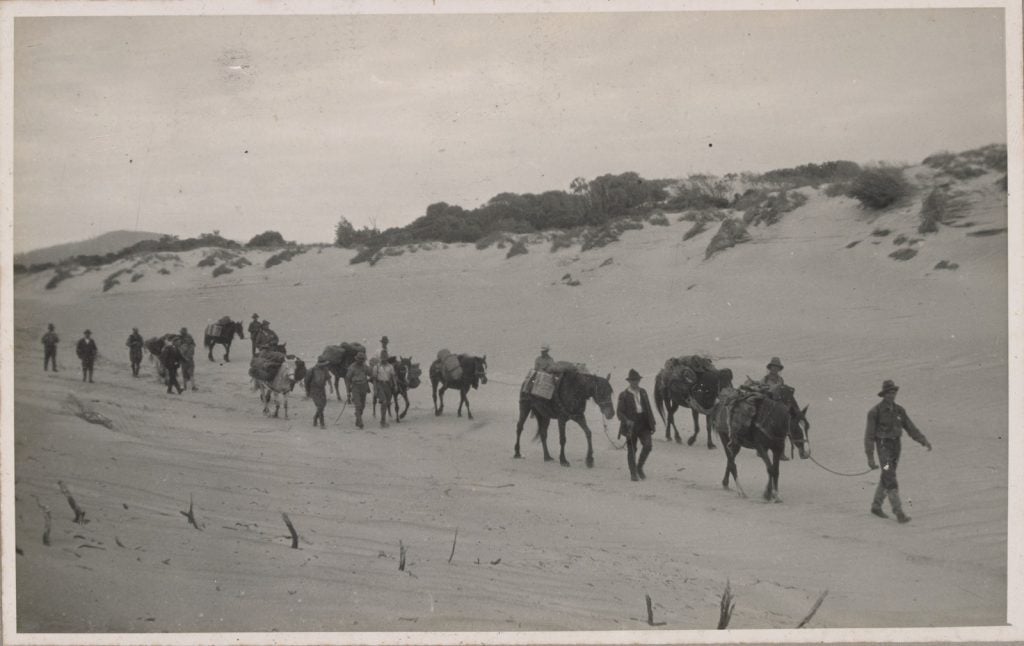
Right: Crossing the beach at Leonard Bay we heard the singing sands echo to our stride, 1928-1929, photo by A. McPhee; H2003.75/5,
This photo, taken on the same trip as shown above, was tough going for the expeditioners….
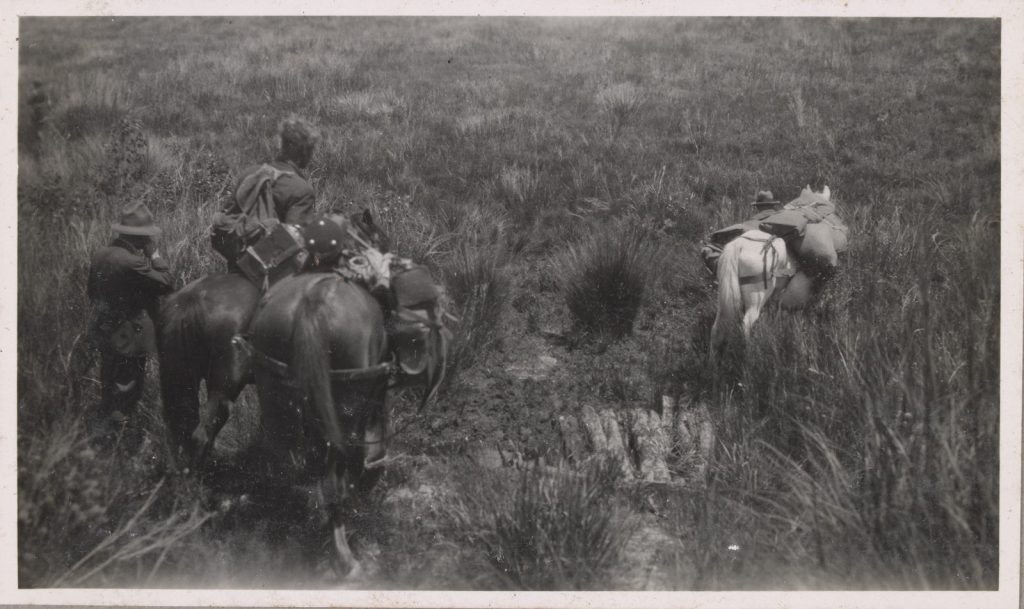
A later visitor found the reward of such exertions in majestic views.
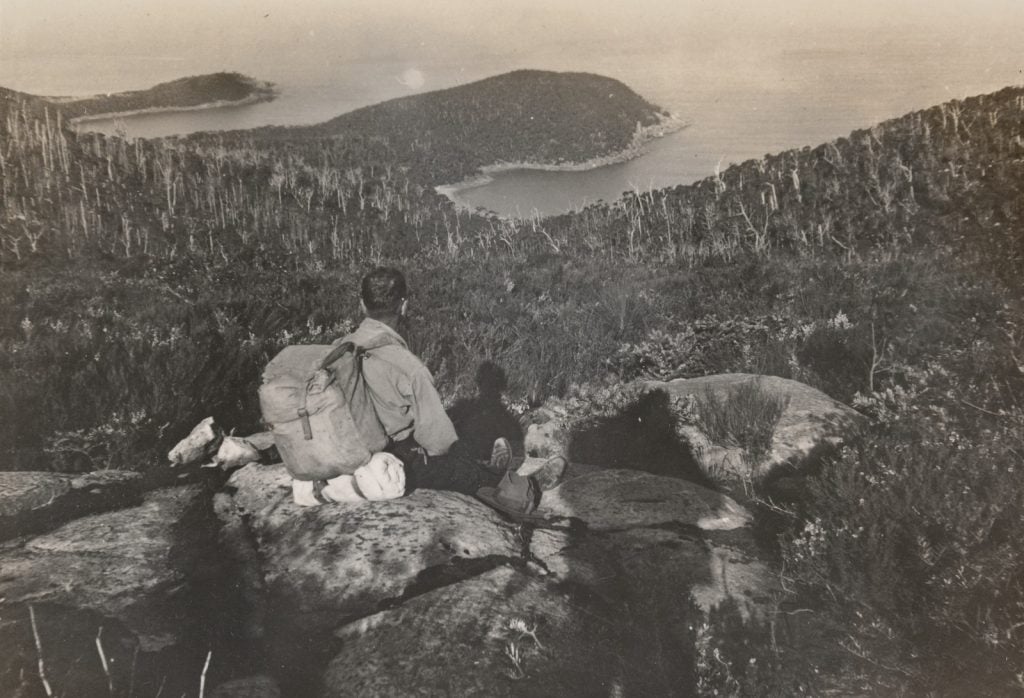
This series of photographs from the Bennett family album captures something of the challenges of early camping holidays when even arriving at the destination was an achievement.
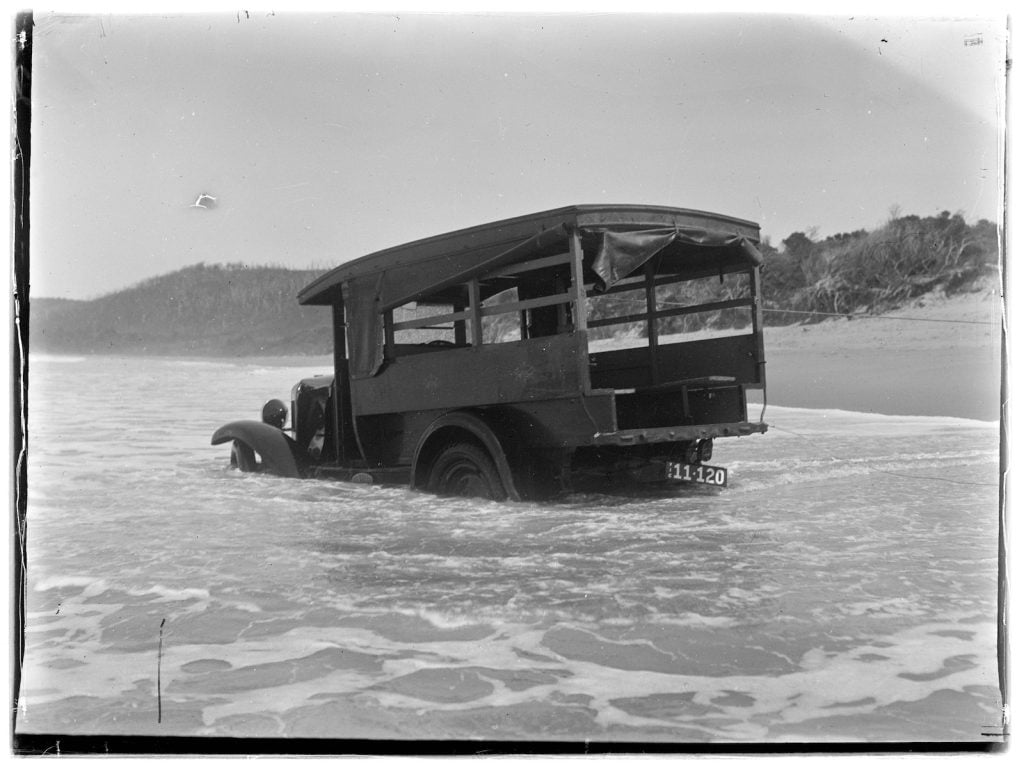
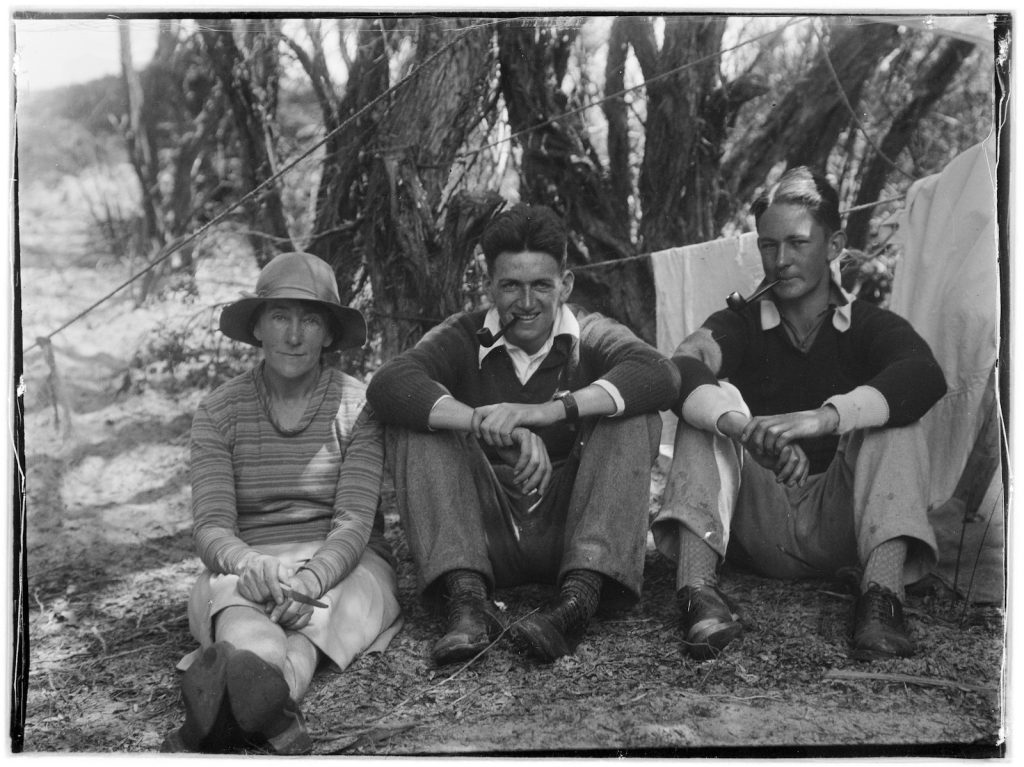
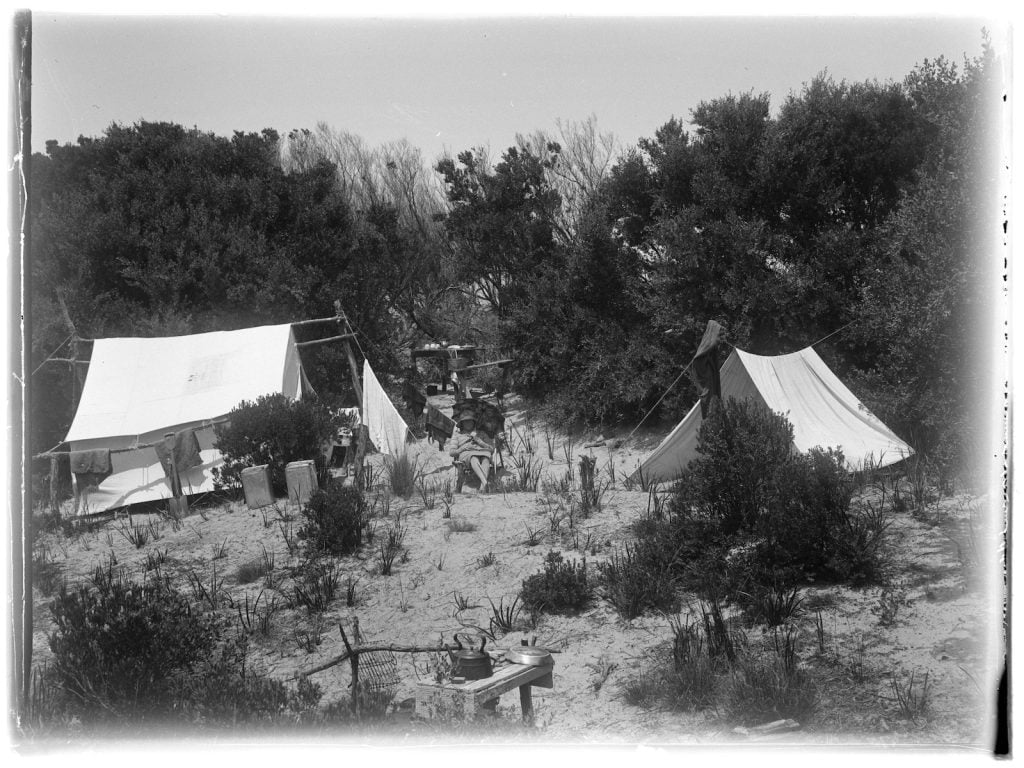
The 1950s saw the development of infrastructure to entice and support tourists – accommodation, hot and cold running water and electric power. Annually visitor numbers have grown, from 70 in 1926 (Age, 17 July 1926), to the current balloting of camping spots peak in holiday times, as is the case for many national parks.
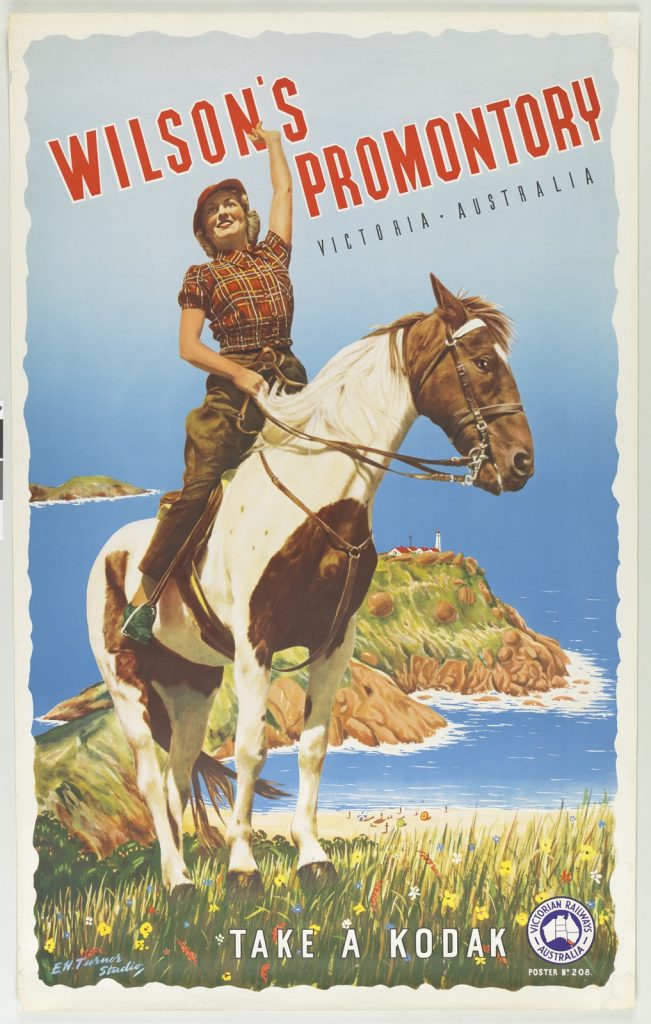
From the Prom’s earliest days – the tensions between conservation and protection, use and access were evident. A 1904 proposal for subdivision into grazing blocks met with a strong opposition, and ultimately led to the permanent reservation of the park (Argus, 13 September 1904). A golf course was proposed in 1960, 6 as were various building ventures. Public campaigns in 1996 and 2013 opposed further development proposals.
A member of the Field Naturalists Club of Victoria and later, a joint founder of the the Victorian National Parks Association, John Roslyn Garnet (Ros) first visited the Prom in 1924, after hearing the stories of his uncle – the park ranger, and his aunt. The prom, “was all that [he] had imagined.” 7
Today, Ros Garnet’s words speak powerfully of the place the Prom holds in many heads and hearts:
Wilsons Promontory National Park is yours and mine. We hold it in trust for the generations yet to come. As with each of our national parks, it is there for the education, enjoyment and edification of all people for all time, for the protection and preservation of its supreme scenery and its native plant and animal wildlife. Each of us who visits the park does so as a trustee or as an owner who wants it to retain unimpaired all those values which now appeal to us.
Garnet, JR, 2009, A history of Wilsons Promontory, Victorian National Park Association, Carlton, p 12
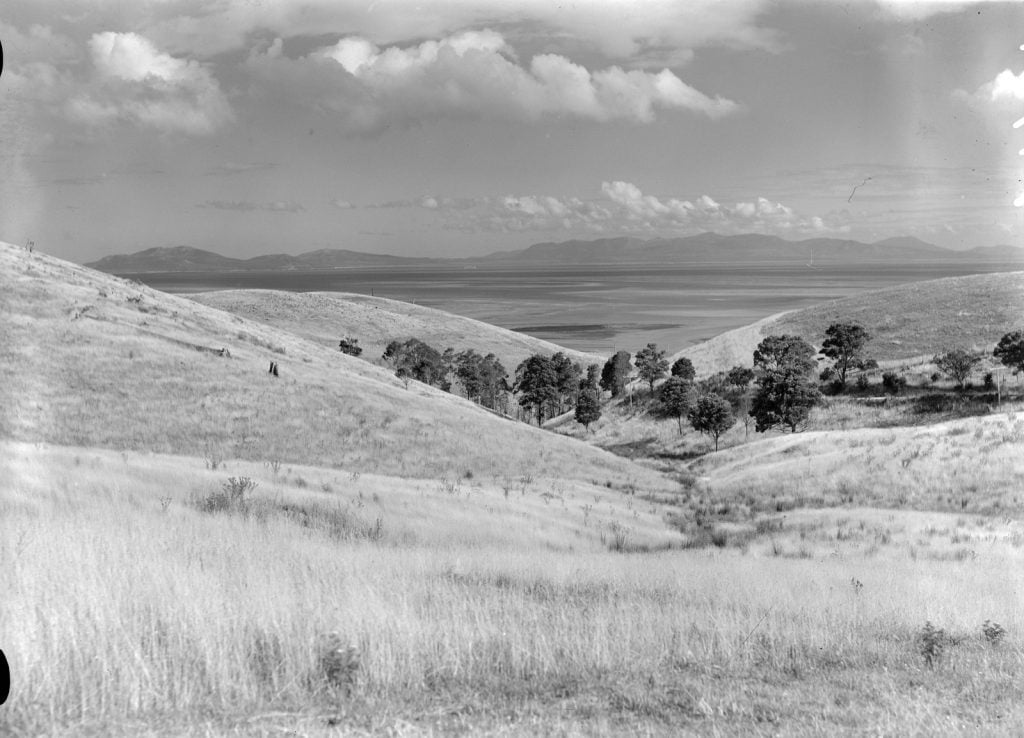
More to explore
Garnet, JR, 2009, A history of Wilsons Promontory National Park, Victorian National Park Association, Carlton
Garnet, JR, 1971, The wildflowers of Wilson’s Promontory National Park, Lothian in conjunction with the Field Naturalists’ Club of Victoria, [Melbourne]
Gregory, JB, 1885/6, To Wilson’s Promontory overland, The Victorian naturalist, Vol 2, p 43-48, 34-59, 87- 90, 150-154
Wilsons Promontory bioregion – Ecological vegetation classes
Wilsons promontory Marine National Park – iNaturalist
Wilsons Promontory National Park – PROV collection.
Wilsons Promontory – Victorian Collections
Wilson’s Promontory – Victorian places
Victoria’s heritage: Wilsons Promontory National Park
- Catrice, D, 1994, Victoria’s heritage: Wilsons Promontory National Park, Parks Victoria, p 1
- Gregory, JB, 1885/6, To Wilson’s Promontory overland, The Victorian naturalist, vol 2, p 56
- As above, p 154
- Victoria Government gazette, Gazette 68, 8 July 1898, p 2960
- Garnet, JR, 2009, A history of Wilsons Promontory, Victorian National Parks Association, Carlton, p 54
- As above, p 160
- As above, p 7

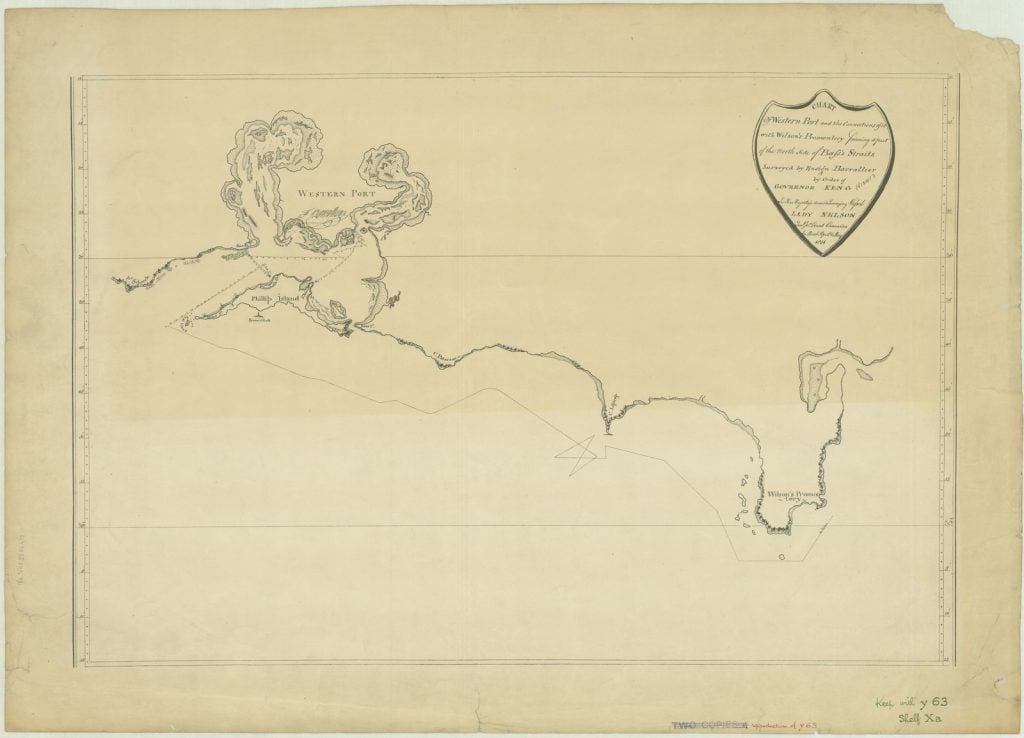

Thank you for the article. My family and spent many Christmas and Easter holidays at the Prom. I have taken my kids for a holiday too… I have some photos somewhere will find em.
Hello Shelley – lucky you! Thank you – I’m glad that you enjoyed reading the article.
I often visit The Prom as I live only just over an hour away. It is wonderful that it was saved from becoming farmland.
I was disappointed that the article made no mention of the traditional owners. I was lucky enough to be shown around some of the Prom and given a talk by one of the rangers who is a traditional owner. I learnt a great deal.
Hello Bron
Thank you for reading, and your feedback. I have added an acknowledgement of the traditional owners, and a link to this page from the West Gippsland Regional Catchment Authority with further information.
Excellent article. Our Fitness Group has had many enjoyable weekends staying in the huts at Tidal River and enjoyed running/ walking all of the great tracks that emanate from there.
Hello Winston – thank you for reading – and your feedback – a wonderful place to be able to explore over time as you have.